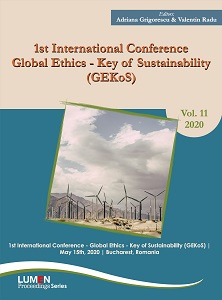The Role of Public Policies and Economic Instruments in Stimulating the Circular Economy
The Role of Public Policies and Economic Instruments in Stimulating the Circular Economy
Author(s): Gabriela Iuliana Paraschiv (Ganea), Stefania-Rodica Hubel (Anghel)
Subject(s): Business Economy / Management
Published by: Editura Lumen, Asociatia Lumen
Keywords: Circular economy; public policies; transition; resources;
Summary/Abstract: Although the concept of circular economy is still very young, the need to slow down the consumption of resources is well known, from the moment the process of globalization began to take shape, in the early 1980s; thus, developed countries have taken many steps in the process of establishing public policies that anchor in a daily reality the concept of circular economy, thus ensuring its progress through a well-developed legislative system, economic instruments and fiscal measures. designed to create an optimal environment for economic growth and maximize the benefits of its implementation. This article aims to highlight the progress made in establishing public policies related to the circular economy - an integral part of the concept of sustainable development, thus following the process of transition from the so-called "linear economy" to a circular economy, which aims to optimizing resource consumption and harmonizing the long-term sustainable development needs of mankind. In this sense, the paper presents a review of existing policies at global, regional and local levels and their role on the transition to the new economy, the main objective being to identify policies that are transmissible, as well as an analysis of the evolution over time. them. At the same time, the aim is to outline a vision on the existing opportunities by:
Book: 1st International Conference Global Ethics Key of Sustainability (GEKoS).
- Page Range: 283-294
- Page Count: 11
- Publication Year: 2020
- Language: English
- Content File-PDF

